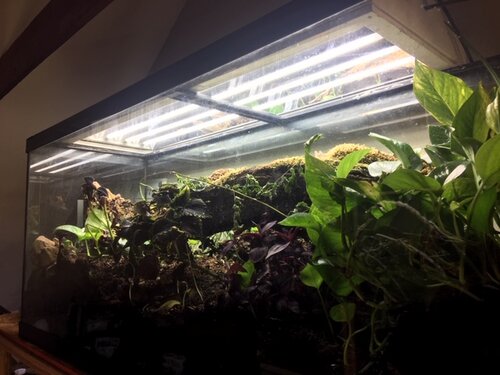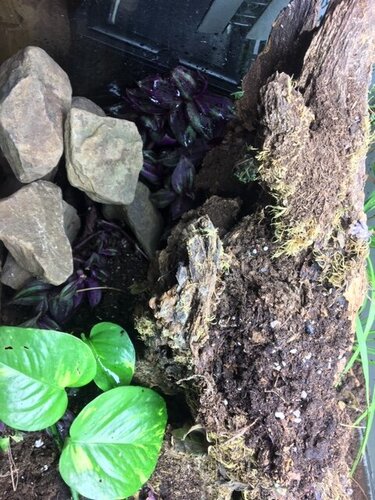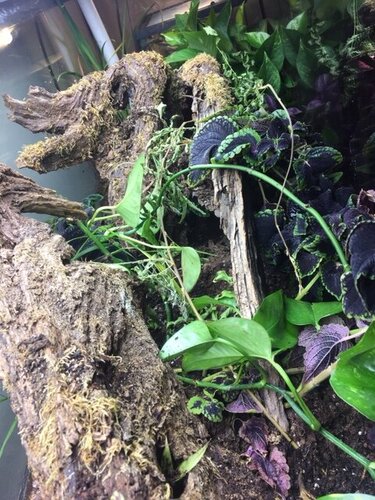ArborealSapien
Member
I am designing a new 150 gallon terrarium, hoping to keep some form of Pygmy or minor/lateralis, but I want to test the temps and humidity for quite some time to see how things look. I am not married to any species yet, I want to see how the terrarium runs and find the inhabitant that would fit best, I am just hoping I can get it to work for a smaller chameleon.
This begins pretty typical, drainage layer, substrate, live plants, but buried all the way through the substrate/drainage layer, is a PVC pipe, in a large L shape. One end of the L is in the "cave" at the very back/bottom, sealed with PVC mesh, the PVC L then runs all the way to the other side and comes out the top of the terrarium, catty-corner to the "cave". The "cave" itself has drainage in it and thus will not hold water, all liquids that goes in, will feed to the drainage layer.
I have one goal and one experiment in mind with this "cave":
The goal is to be able to send more spring tails straight to the substrate layer by pouring them through the PVC vent, washing them down to the base of the "cave" and then into the drainage layer, an unobtrusive re-inoculation of CUC.
The experiment is with temperature and humidity, I wonder if warm are will flow into the cave, get pulled through the PVC, cooled by the substrate, then vented out or back in the terrarium above the soil level. Or vice-versa?
What is everyone thoughts? Think it may work? Anyone tried anything like this? Any species recommendations for a setup like this? Maybe the inhabitants will interact with the cave? Maybe I can create a micro-climate around the mouth of the cave? Caves tend to be damp in nature, will there be a moisture pocket?
This begins pretty typical, drainage layer, substrate, live plants, but buried all the way through the substrate/drainage layer, is a PVC pipe, in a large L shape. One end of the L is in the "cave" at the very back/bottom, sealed with PVC mesh, the PVC L then runs all the way to the other side and comes out the top of the terrarium, catty-corner to the "cave". The "cave" itself has drainage in it and thus will not hold water, all liquids that goes in, will feed to the drainage layer.
I have one goal and one experiment in mind with this "cave":
The goal is to be able to send more spring tails straight to the substrate layer by pouring them through the PVC vent, washing them down to the base of the "cave" and then into the drainage layer, an unobtrusive re-inoculation of CUC.
The experiment is with temperature and humidity, I wonder if warm are will flow into the cave, get pulled through the PVC, cooled by the substrate, then vented out or back in the terrarium above the soil level. Or vice-versa?
What is everyone thoughts? Think it may work? Anyone tried anything like this? Any species recommendations for a setup like this? Maybe the inhabitants will interact with the cave? Maybe I can create a micro-climate around the mouth of the cave? Caves tend to be damp in nature, will there be a moisture pocket?
Attachments
-
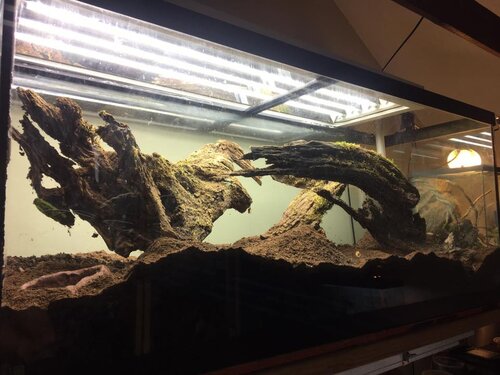 Main shot.jpg79.5 KB · Views: 479
Main shot.jpg79.5 KB · Views: 479 -
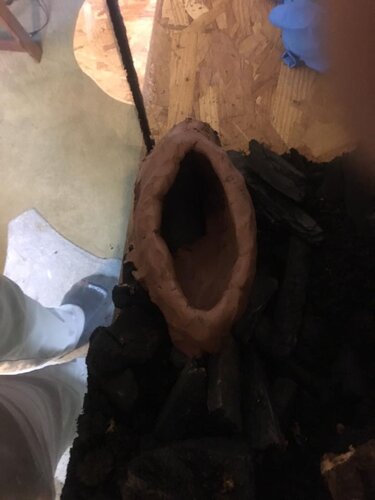 67805296_10216298619050060_8238706163831537664_n.jpg39.5 KB · Views: 480
67805296_10216298619050060_8238706163831537664_n.jpg39.5 KB · Views: 480 -
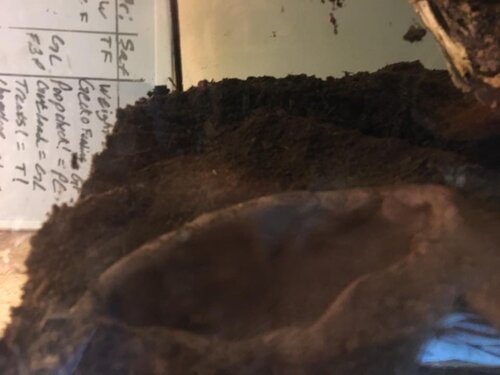 67825371_10216298618050035_4679823054648377344_n.jpg39.3 KB · Views: 472
67825371_10216298618050035_4679823054648377344_n.jpg39.3 KB · Views: 472 -
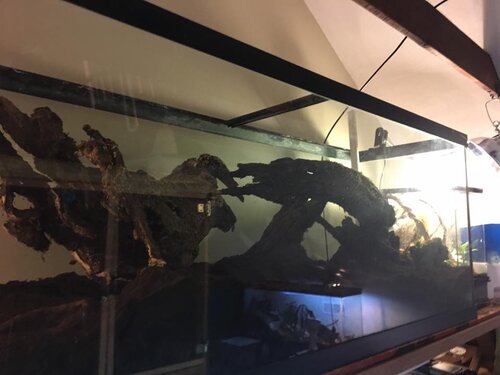 67954516_10216298618090036_8299341824921698304_n.jpg49.5 KB · Views: 484
67954516_10216298618090036_8299341824921698304_n.jpg49.5 KB · Views: 484 -
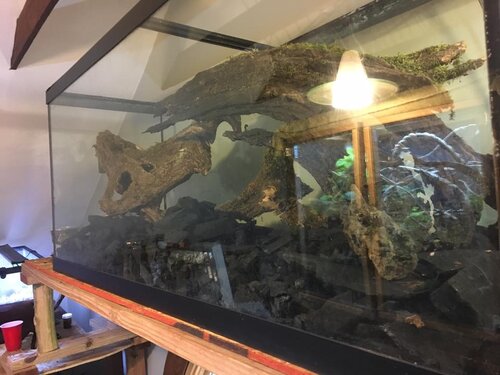 68477927_10216298619930082_5348291962166312960_n.jpg71.6 KB · Views: 462
68477927_10216298619930082_5348291962166312960_n.jpg71.6 KB · Views: 462






